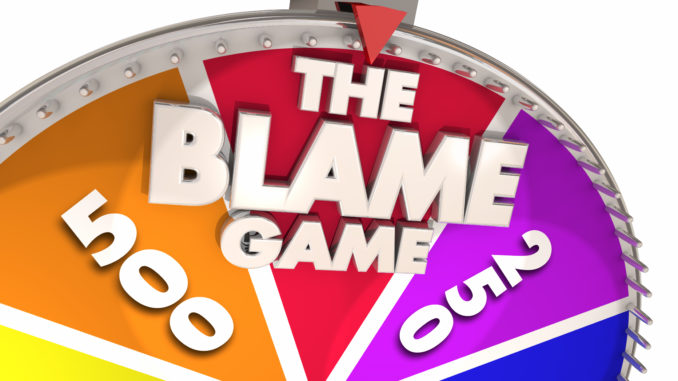
We’ve all heard it before … “Jasmin didn’t do her side work!” “Richard isn’t pulling his weight!” “Carolyn always gets the good tables!” So, whose fault is it? IT’S MANAGEMENT’S FAULT!
Absent proper standard operating procedures, checklists, and steps-of-service clearly outlined, how can we blame the team? These become the basic roadmap that all behavior and work expectations are measured and held accountable by. Without them – the continuous loop of blaming and complaining and lack of efficiency carries on and on in a kind of insanity.
Auditing your procedures by someone who is not emboldened by conflict is important. Having a seasoned hospitality consultant review and rewrite your SOPs for improved efficiency takes the personal aspect out of the standards that are expected. Once approved, these new standards should be rolled out with new training, including updates to guest service skills, upselling techniques and menu knowledge testing for the optimal service team.
Standard Operating Procedures (SOPs): These are the basics of how you wish your team members to perform. They incorporate your company’s required human resources procedures, time and attendance demands and any Tribal, TERO or gaming information that is required – but it continues with exactly how each team member moves through their job in the specified restaurant. This document should answer any and all questions that a new or seasoned team member might have about his or her employment and current role.
Steps of Service (SOS’s): These are more detailed actual steps in performing each task in their current role. This includes step-by-step procedures for each of the crucial tasks that the team member might perform, such as “how to approach a table,” “how to take an order,” “how to properly ring in an order into your point-of-sale system,” or even “how to answer the phone” and “greet a guest.” These specific SOS’s make a very clear expectation of the team member, leaving no room for confusion.
Checklists: The daily tool for each team member to refresh and understand what is expected of them. These checklists may rotate or even be adjusted for season, special occasions or general maintenance. These are signed and used for accountability with the team member and are one more tool to end the “blame game.”
Inspect What Is Expected (In-Ex): A requirement for these systems to work is the need to have management inspect what is expected consistently and often. Team members tend to take the path of least resistance. It is human nature. However, they also can be trained with the understanding that their work IS being inspected and we want them to do it the way we outlined. Once they believe in that, they will perform at a very high level.
Teamwork: It is important that each team member performs as part of his or her team’s success. In a competitive environment, some might think that their goal is to focus only on their individual performance for success. The best actually make sure that the team is successful, while performing at a high level individually.
Culture of Hospitality: The definition of hospitality is “the friendly and generous reception and entertainment of guests.” This is done with personalized service, attention to details, recognition and acknowledgement of each guest in a friendly way. It is also through the smile that is both heard and seen in every interaction with guests and fellow team members. Creating this culture is difficult, especially with “over-seasoned” team members.
Goals: Your team is smart. Teach them the business and share with them the goals of the restaurant and company. Set benchmarks and incentives if the team performs beyond expectations. You will quickly see how some, if not all, of your team will work towards achieving your shared goals.
Consistent Improvement: Always strive for improvement. Do your best today – better tomorrow! Setting this expectation of your team will allow each member to strive for their best.
If your restaurant is having performance problems outside of these, an audit should be performed to see what the major issues are. Items that are normally reviewed in an audit are:
Competitive analysis. Reviewing your offering against the competition to make sure that your pricing and menu are differentiated and appropriate.
Menu analysis. Mapping your menu sales to see if there are items that must be adjusted for optimization and removing those “dogs” that are dragging your offering down. This will also include a review of pricing, menu layout and presentation, as well as the kitchen mise en place.
Labor analysis. This is often considered the silent killer of restaurants. Is your labor deployed correctly? Is your team trained and following procedures? Are you misaligned in different areas, such as management versus service team?
Inventory management analysis. Reviewing the ordering, receiving and stocking procedures to make sure that the best practices are being followed. Taking inventory controls and ensuring that there is proper accounting and opportunities to reduce theft.
Tech opportunities. Suggesting new and required technologies that will make your operation more efficient, while working with your existing systems.
Look, every guest, every team member and every dollar is critical. This is just the first step to ensuring that you are doing everything possible to reduce cost, optimize labor and increase margins.




